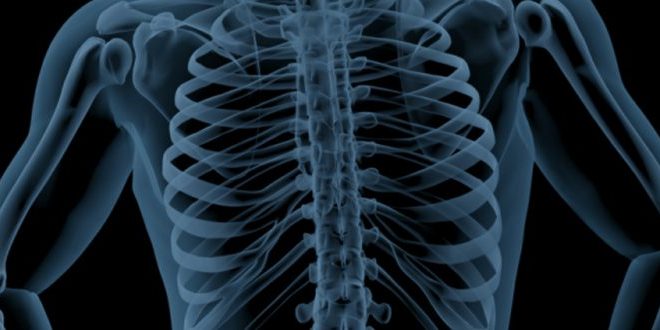The Connection Between Spinal Alignment and Brain Health
Your spine is more than a structural support—it’s the communication channel that links your brain to the rest of your body. Misalignments can distort this connection, leading to brain fog, mood shifts, headaches, and poor focus. By addressing spinal alignment alongside muscle and fascia imbalances, chiropractic care restores clear brain-body communication. This helps regulate hormones, improve emotional balance, and support long-term neurological clarity and resilience.

Think of your spine as the body’s most vital communication highway. Every message between your brain and body travels this route. Whether it’s your foot stepping off a curb or your heart adjusting to stress, the spine is the main channel that carries those signals. But what happens when that highway becomes jammed, twisted, or blocked?
Spinal misalignments—also called subluxations—disrupt this flow of information. While many people associate chiropractic care with back pain relief, there’s a deeper layer most don’t realize: your spine directly impacts how your brain functions. Misalignments can alter how your brain receives and processes information, leading not just to pain, but also to issues like brain fog, mood swings, sleep disturbances, or trouble concentrating.
This isn’t just about discomfort in your back or neck. It’s about how well your body and brain communicate. A misaligned spine creates tension and interference in the nervous system, which can affect hormone regulation, emotional balance, and even immune function. When those communication lines are clear, the brain can better regulate the rest of the body.
At Mountain Movement Chiropractic & Natural Health, our approach is different. We don’t just adjust the spine and send you on your way. We look at the full picture—muscles, fascia, inflammation, and your unique movement patterns—so we can address the root causes of dysfunction, not just the symptoms. This is the foundation of lasting healing and clarity.
The Brain-Spine-Nerve Axis: The Command Center of the Body
The brain, spinal cord, and peripheral nerves form one fully integrated system. Together, they manage everything from sensory input and muscle movement to hormone regulation and immune responses. This isn’t a collection of separate parts—it’s one continuous information loop that allows your body to function smoothly and adapt to your environment in real time.
The Spine as a Communication Channel and Protective Pathway
The spine serves two essential roles in this system. Structurally, it protects the spinal cord—the primary pathway that connects the brain to every organ, muscle, and tissue. Functionally, the spine allows for the free flow of nerve signals by supporting proper alignment and movement. Every spinal segment is designed to help facilitate this communication. When aligned correctly, the nervous system can operate without interference, sending and receiving messages without delay or distortion.
How Misalignment Disrupts Brain-Body Communication
When the spine becomes misaligned—even slightly—the entire system is affected. Nerve signals may become blocked or distorted, leading to confusion between the brain and the body. This interference can create ripple effects throughout the nervous system, influencing not only pain levels but also digestion, sleep, stress management, focus, and emotional balance.
A misaligned spine can cause muscle compensation, fascia tension, and poor movement patterns, all of which send abnormal feedback to the brain. Over time, this can overload the brain’s ability to regulate and respond appropriately—leading to dysfunction that many people chalk up to aging, stress, or bad luck.
How Spinal Misalignment Affects Brain Function
When the spine is out of alignment, the body’s communication network begins to falter. Even small misalignments—known as subluxations—can interfere with the way signals travel between the brain and body. This disruption creates a kind of “neurological static,” where the brain either doesn’t receive clear messages or misinterprets what the body is trying to communicate.
Over time, this interference can lead to widespread dysfunction, especially in areas that rely on precision and regulation—like hormone balance, emotional stability, and cognitive processing.
Symptoms That Go Beyond the Spine
Spinal misalignment can present in ways that don’t immediately seem related to the spine. In fact, many people experience neurological or emotional symptoms without realizing the root may lie in their spinal health. Common signs include:
- Brain fog: Difficulty thinking clearly or staying mentally sharp
- Mood swings: Irritability, anxiety, or emotional fluctuations that feel hard to control
- Headaches and migraines: Often triggered by tension or poor nerve feedback from the cervical spine
- Decreased focus and memory: Trouble concentrating or retaining information, especially under stress
These symptoms often overlap with chronic stress, fatigue, or hormonal imbalances—making it easy to miss the spinal component behind them.
What the Research Shows
Emerging research supports what we see in our clinic every day. Studies using functional MRI and neurophysiological testing have shown that spinal adjustments can influence activity in the brain’s prefrontal cortex—the area responsible for decision-making, focus, and emotional regulation. Other studies demonstrate changes in brainwave patterns and improved sensorimotor integration following chiropractic care.
The Role of Fascia, Muscles, and Movement Patterns in Brain-Body Communication
Fascia is the body’s connective tissue web. It wraps around every muscle, bone, nerve, and organ—linking everything together like a full-body wetsuit. It plays a major role in posture, stability, and how your body holds onto patterns of movement, injury, and even emotion.
Over time, fascia can become tight or restricted due to repetitive movements, poor posture, past injuries, or stress. These restrictions don’t just cause stiffness—they distort how your muscles function and how your brain interprets movement and position.
When the Fascia and Muscles Send the Wrong Message
Tight or imbalanced muscles and fascia create faulty feedback loops. This means the brain receives incorrect or delayed information about the body’s position and movement. As a result, the brain makes poor decisions—leading to compensation, fatigue, and dysfunction in how you move, breathe, and respond to stress.
For example, if the fascia in your shoulder is locked up from past tension or injury, the brain may avoid using that area fully, even if the pain has subsided. This avoidance changes posture, limits motion, and increases strain elsewhere—eventually triggering symptoms like headaches or brain fog.
Why Addressing Fascia and Muscle Imbalances Is Essential
Adjusting the spine alone is often not enough. Without releasing the surrounding muscle and fascial restrictions, spinal misalignments tend to return. That’s why our care at Mountain Movement includes advanced myofascial therapy, muscle activation, and movement instruction alongside chiropractic treatment.
By integrating fascia release with spinal work, we retrain the entire system. This not only restores structural balance—it enhances the quality of information traveling to and from the brain. Better input equals better output, and that’s the key to real, lasting change.
Conditions Commonly Linked to Spine-Brain Imbalance
Headaches and Migraines
Misalignments in the cervical spine (neck) can create tension, nerve irritation, and vascular changes that trigger frequent headaches or debilitating migraines. Restoring proper alignment and reducing fascial tension often brings significant relief.
Concussion Recovery
After a concussion, the nervous system is often hypersensitive and easily overwhelmed. Gentle spinal adjustments and fascial work help restore balance in the brain’s feedback loops, supporting faster neurological recovery and improving post-concussion symptoms like dizziness, fogginess, and fatigue.
Chronic Fatigue
When the nervous system is constantly fighting to maintain balance due to poor communication, energy levels drop. Misalignments and muscle imbalances force the brain to work harder, draining reserves and contributing to chronic fatigue.
Postural Imbalances
Long-standing posture issues are often a sign that the brain is misreading the body’s position in space. Poor spinal alignment and fascial restrictions reinforce bad habits, causing discomfort, decreased mobility, and long-term wear and tear.
TMJ and Jaw Tension
The temporomandibular joint (TMJ) is directly influenced by upper cervical alignment, jaw muscle tension, and stress-related movement patterns. Addressing these areas through integrated care often relieves jaw pain, clicking, and tension headaches.
Cognitive Challenges and Mental Fog
When spine-brain communication is compromised, the brain may struggle to process information efficiently. Patients often report difficulty concentrating, mental fatigue, and reduced clarity. Restoring balance through chiropractic and movement therapy helps lift the fog.
Pediatric Sensory and Movement Imbalances
Children with sensory processing issues, poor coordination, or delayed milestones often benefit from care that integrates spinal alignment, neurological feedback, and gentle fascial release. These techniques help support developing nervous systems and restore better function.
Reclaiming Control Through Alignment
Your brain depends on clear, uninterrupted communication with your body to perform at its best. That communication relies heavily on spinal alignment, muscular balance, and functional movement. When these systems are off—even slightly—your brain’s ability to regulate mood, memory, movement, and energy begins to falter.
But dysfunction is not permanent. Through the right care, your body and brain can reconnect, rebuild, and restore. At Mountain Movement, we help patients move beyond temporary fixes by addressing the root causes that impact both structure and function. Whether you're battling brain fog, chronic tension, or postural fatigue, there is a path forward—and it begins with restoring the spine-brain connection.
Mountain Movement Chiropractic & Natural Health
📍 1901 Laurens Road Suite E, Greenville, SC 29607
📞 (864) 448-2073
🌐 mountainmovementcenter.com
💬 Ask us a question on Facebook
📅 Join Dr. Day at his weekly movement workshop with Bon Secours Well Walkers

We Treat the
Toughest Cases
We'd love to talk with you about yours. Ask us anything and we will get back to you with a detailed answer about your case.

.jpg)




